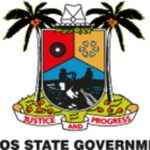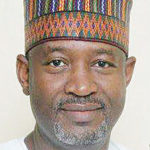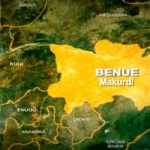USPF Rallies to Serve the Underserved
 The need for universal access to ICTs cannot be overemphasised and as African countries seek means and measures to bridge the gap in terms of access to ICTs, the continent has come up with structures and plans for the adequate and proper deployment of ICT infrastructures across cities and communities to aid access to ICT services thereby connecting the unconnected and underserved areas.
The need for universal access to ICTs cannot be overemphasised and as African countries seek means and measures to bridge the gap in terms of access to ICTs, the continent has come up with structures and plans for the adequate and proper deployment of ICT infrastructures across cities and communities to aid access to ICT services thereby connecting the unconnected and underserved areas.
As governments in Africa work towards a connected Africa, various initiatives have been put in place, like the Smart cities initiative, Smart States, Smart Africa, Seed Funds to Support ICT growth, etc. all these no doubt will help in bridging the gap in ICT access delivery in Africa to the underserved and unserved areas.
But how far will these initiatives go and how well will these funds be utilised to deploy adequate ICT infrastructures that will cater for those lacking these services in the region.
Nigeria is however on the part to achieving that digital economy in all parts of the country; thereby occupying a space in the market place that exists on the internet through its broadband plan to achieve access to all.
ICT access gap is nonetheless a viable option to achieving universal access, as this will help to know the status of ICT in the country. Of the estimated 170 million Nigerians, it has been said that about 40 million still lack access to basic Information and Communication Technology services and products.
It would be recalled that in November 2014 the Ministry of Communications Technology under the watch of the minister, Omobola Johnson, commissioned a Base Transceiver Station, BTS, in Igbo Olodumare a suburb of Ondo State, this was part of the ministry’s quest to see that both the underserved and unserved areas within the nation get ICT services delivered to them in order to have access to voice and data service , offering subsidised data service to such areas that are either unserved or underserved.
And with a promise of connecting about 111 communities in South West Nigeria to various telephone services through seed funds provided by the Universal Service Provision Fund, the next implementation phase according to the ministry, will see the deployment of more than 200 BTS across Nigeria which will enable more than 300 communities with an estimated population of 1.6 million gain access to ICT services.
At a recent industry forum to unveil the new USPF website, and launch of clusters of ICT gap, Johnson said that the USPF in pursuit of its mandate to stimulate the deployment and utilisation of ICT services in unserved and underserved communities and groups in the country, has continued to play a leading role in promoting and deepening ICT access and availability in the rural areas of the country. “The mandate of the fund is the backdrop against which it developed the SMP 2013-2017 to guide the execution of sustainable ICT projects which will improve the quality of lives of Nigerians and facilitate socio-economic development.”
The minister however stated further that as the country forges ahead it is the greatest wish of the ministry to continue to collaborate with the telecoms operators to closing access gap and to set Nigeria on the path of being a digitalised nation.
The minister who is also the chairman of the USPF board added that in trying to make ICT access a reality, it has become clear that to make the dream of providing ICT access and availability to all in the country a reality, the country needed to get a clear view of the true access gap within the country so that the interventions are targeted at the appropriate communities and groups.
According to the USPF, access to ICT is not a privilege but a right. Indeed this is true but how will Nigeria be able to achieve this? If this dream of a connected Nigeria must be realised how will this be done considering the fact that the country is vast, comprising six geo-political zones?
ICT clusters for adequate access delivery
To make access possible, Abdullahi Maikano, Secretary USPF said that there was the need to identify the overall ICT access gap in Nigeria and to group the gaps into clusters of voice telephony and transport network gap within the country. This he added was done in the geo-political zones of the country where the attributes of the clusters is important to getting networks or connection to those areas.
He further added that the USPF came up with 207 clusters, having an estimated population of 36.8 million people. This according to him is the first of its kind in Africa, where also existing service areas were identified.
With Delta State having seven clusters and Lagos two, the USPF is designing projects and strategies to cover these gaps and to ensure that everyone irrespective of locality is connected in the 21st century.








